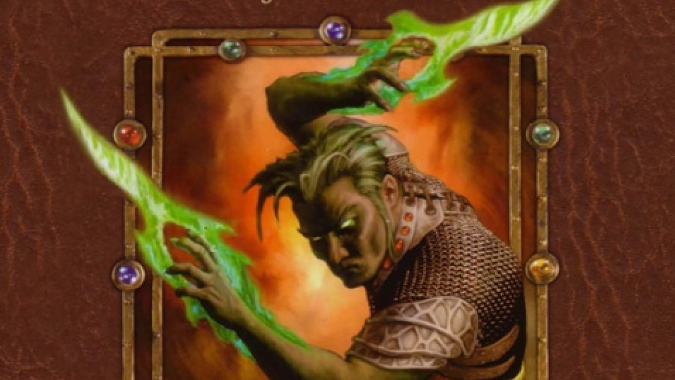DMs don’t need to plan every last detail their D&D campaigns and settings

When you’re starting a homebrew D&D campaign — building your own adventure in your own world — it’s okay to not have everything planned out in advance. In fact, it can be beneficial to have specific things you do plan, but other things that you leave deliberately vague or even outright don’t do any work on before your first game session. It’s okay to start small, and sometimes it’s even better.
I’m not saying you should just wing your whole campaign and never plan anything. (And if you’re the kind of DM who can do that level of improvisation, you’re probably not here looking for world-building advice.) But also knowing when it will help to have structure for the campaign and when it’s best to let the story evolve organically is a skill you can develop over time.
Let’s talk about how and why you should leave some empty space in your campaign plans.

Leaving gaps in your setting allows for more collaborative storytelling
There will always be something you end up realizing you didn’t detail when you first started working on your campaign, some aspect of the world you just didn’t think about. Maybe one of your players comes to you and says “Hey Matt, is there a thieves’ guild in the city? I want my Rogue to be in it.” And you realize you hadn’t made one. Does the city have one? What should it be like? No matter how much you plan, there are going to be things you have to invent on the fly — possibly with a little help from your players.
This is one of the reasons I like leaving some elements of the campaign up in the air. Players will always have questions like this, and you can use it to build out the world in ways that make players feel more connected, more invested in the story. Now instead of being a simple pickpocket making their way in town, perhaps this player character is the adopted child of the head of the local criminal underworld, trying to prove their loyalty and value to said distant parental figure immediately hooks their character more firmly into the setting. And beyond making more interesting spaces for characters, doing this hooks the player more firmly, because every time you roleplay absentee crimelord dad it involves an aspect of the world that they came up with.
When a player comes to you with an idea, it’s always worth considering how to make that idea fit your game. Perhaps one of the players wants to play a Warforged and another wants to play a Goblin Artificer, and the two of them come up with the idea that they come from an underground goblin city where the Artificer found the Warforged buried and damaged in a cave in, fixed them up, and the two of them decided to strike out on their own. Don’t say “Goblins don’t have cities, see, I have this 2000 word section about how goblins live in huts in swamps.” Instead nod and let them come from Goblin City. If a player comes to you and says she wants to be the runaway princess of a distant kingdom who’s being hunted by her family who want her to take her place as a scion of a noble lineage and presumptive heir to their nation, find room in your world for that to be the case.
Leaving empty spaces in your world and campaign gives you the flexibility to easily integrate player ideas like this. And letting your players to do this kind of thing is an amazing tool for fostering roleplaying and getting them interested in the game. It gives the player something, while also giving you the gift of plot complications to spring on said runaway princess when their handsome, charming brother arrives in town to drag them back to Theirlandia and gets the party almost on their side in the process. Now the player is forced to deal with a problem they can’t just kill, and better yet, it’s entirely their fault for handing you this bit of backstory.
These small background details can become a big part of the campaign, and can slide up and down on the spectrum as the campaign unfolds. Perhaps the campaign starts in a small town and the party’s fighter comes from a distant land to the west nobody in the party except them has ever seen or heard of. Say you let Janice go hog wild on the place, making up the customs, what the people are like, how her Battlemaster left home when her liege-lord died and is now living as a Saardak, an honorless mercenary. Then, a year into the campaign, you introduce a new character, a bounty hunter from Janice’s homeland who is hunting for them. Or you introduce a story thread that would allow the party to travel to Janice’s invented country and have adventures exploring a whole new area they’ve never seen or heard of before… and now Janice is playing tour guide and everyone else is the fish out of water.
There are lots of potential stories that can come of letting players make their mark on the world, stories you may never have thought up. And some of these stories are only possible if you don’t flesh out every little detail of your campaign world.

Not detailing the entire world lets DMs add things at will
Letting players actually do some worldbuilding in this way is great. It encourages roleplaying and giving you plenty of hooks to use in later stories, keeping players invested in the world. But it’s not the only reason you should avoid planning out your whole game world in advance, because leaving empty spaces in your setting also gives you room to come up with stuff later, and that’s a huge benefit as a DM running a game.
Let’s say you start your campaign in a small but growing city. You know there are regions to the north, south, east, and west of that city that have powerful nations, and trade partners from those areas come to the city. But instead of building out the details of each nation, you deliberately don’t focus much on them — they’re far away, and while there are representatives from some of these distant locales in your city, there aren’t a lot of them.
This means that if you’re strapped for time to plan out an adventure, you can decide heck, I’ll just run this old module I really love set in a lost city out in the trackless desert, and just say there’s a desert somewhere in reasonable reach of your campaign starting city. It’s easy to do that if you haven’t told your players all about the enormous woodlands surrounding the city from all sides for hundreds of miles. The more you leave blank spaces on your game map, the easier it is to go back in and doodle between the established margins.

You don’t need to improv the whole campaign
It’s not helpful advice to tell DMs to just wing it. In part that’s because that level of improvisation is not to everyone’s taste or skill-set. But also knowing certain things — like the mayor and council members of the city’s ruling circle, the local geography, various prominent NPCs — will help you know how to guide new material into the game.
For example, let’s take that lost city module you want to run because you didn’t have time to come up with your own dungeon this week. Because you let your Rogue design their own thieves’ guild and introduced their not-a-great-dad crime boss dad as the guildmaster, you can use that family connection to get the players on the road to the desert. Meanwhile, because you didn’t specify what the land beyond the river to the west looks like, it’s easy enough to drop a big desert between the kingdoms of the West and your starting city. You know you have a bunch of independent kingdoms to the west, which means it’s easy enough to put Janice’s backstory country on the border of the desert and perhaps the lost city turns out to be your runaway princess’ home, left devastated and deserted due to an ancient curse her brother made a pact with. You can use the framework you’ve built to position players’ stories and work in improvised ideas.
Structure is great, don’t get me wrong. It’s great to sit down and do some worldbuilding and give your game lines to color between. But remember, it’s also great to let your players add things to the world — it introduces ideas you wouldn’t personally have come up with, it gives them a sense of ownership and belonging in the game, and it lets you more easily grow the game later.
Please consider supporting our Patreon!
Join the Discussion
Blizzard Watch is a safe space for all readers. By leaving comments on this site you agree to follow our commenting and community guidelines.
 @MatthewWRossi
@MatthewWRossi




